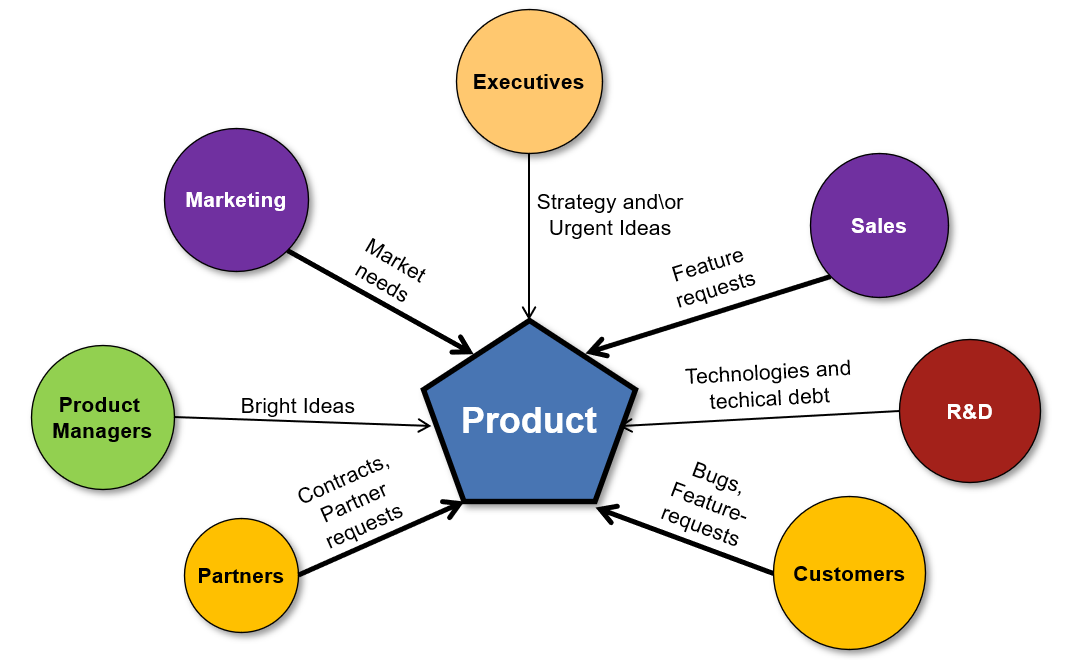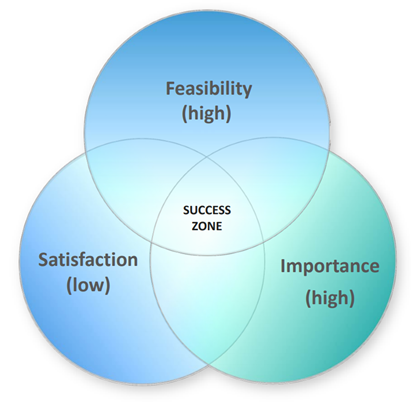Course table of contents
1. Role of product manager and framework
2. Market segmentation and competitive analysis
3. User personas
4. Hypothesis testing <- You are here
5. Product positioning
6. Product roadmap
7. Drafting requirements for development
8. Business model and Business plan
9. Financial plan and pricing
- To be continued
Product hypotheses
In past posts, we've talked about user personas and niche markets. But when a niche has already been chosen, a strategy for dealing with competitors has been determined, it would seem that all existing ideas need to be implemented. So, one of the very important responsibilities of a product manager is to turn into hypotheses all the bright ideas that arise in the heads of management and specialists ... and in their own.

Hypotheses differ from simple ideas in that they are known to need to be tested. And there are several effective methods for this:
- Make a landing page . Disseminate information, get feedback from the market. By the way, this is how we presented our course of lectures and checked what the audience wanted to talk about.
- -. Google , , SurveyMonkey. , , . .
- . , , , , . . 15-20 .
- . 15-20 . , , , B2B .
- -, , . , . , , . .
- , :
- .
- The customer service listens to the pain and suffering of customers.
- Partners promote the product, make a promo, and help with its maintenance.
When I talk about this, very often I am told that in the process of validating hypotheses, the idea of a new product can be stolen. But in fact, an idea is worthless without a team that can implement it, without real implementation. There are millions of ideas today. If you don't have an idea, you can easily find a suitable one on Reddit and try to build a product based on it.

It is necessary to protect technologies, solutions, products, in the final analysis. A patent should be obtained for details, for specific circuits and methods of implementation. But the ideas themselves, on the contrary, need to be discussed. This is the only way to create a successful product.
DropBox example
By the way, this is exactly what many companies did, whose products we use today, and which have formed their niches in the market. Take DropBox for example. Hardly anyone would argue that this is a really successful company. Its market value is in the billions.

But more than 10 years ago, future DropBox executives wondered - do consumers need all this? At that time, there were already products on the market that synchronized files on different devices. The team had a hypothesis that the synchronization needed to be made more convenient, and they simply drew in a video editor what the product user interface might look like.
The video showed what the possibilities of cloning, saving versions, working with files can be. Please note, they did not write a single line of code at that time! But the video posted on Reddit and other forums generated a lot of interest. The developers saw a huge response, they learned what kind of program people want to see, what capabilities need to be implemented for ordinary users who do not have IT knowledge.
It costs hundreds of times less to draw a mock-up of a user interface than to write code, prepare a product, and start selling it. DropBox would be much more difficult to develop if the developers knew what their users were expecting after the first version of the solution was released.
Rules for working with material
When you collect information from the market, you need to consider that all the material is raw. First you need to break it down into categories, structure it. I prefer to add metadata to each feedback, so that I know who the answer came from, how many customers need new features, what is it about - fixing, adding, changing. If you do not structure the information, after a while one large and incomprehensible pile of data will appear.
When there is a structure, you can and should use as many sources as possible. Just walking up to salespeople and asking them won't be enough. It is also necessary to collect opinions from forums and from social networks, request data from marketing and from existing customers. The main thing is not to forget to save the source in the metadata.

Market research should take place at regular intervals. Early feedback will make sure you know about problems, and that's okay. In the meantime, engineers are working on fixes, find those people who were helped even by a prototype or MVP, study the experience and profile of these companies. This will help you find the best positioning for the still "raw" product.
Where to get new feedback? Just repeat the collection of reviews from the same sources - in a month, quarter, six months. People could change their minds, the problem could be solved, the attitude towards the product as a whole could change. But if negative feedback persists, you need to pay close attention to it.
However, I would recommend spending more time with potential clients rather than existing ones. As a rule, potential customers are missing something, and finding out what exactly is the sacred duty of the product manager.
Focus on a long-term strategy when shaping new feature concepts. Don't get hung up on functionality for one client or for a specific situation. Each time, analyze whether this functionality will be in demand in 1 year or in 5 years? Will it be useful for at least 50% of potential consumers?
Do I need to take a new feature to work?
When it comes to adding something new to a product, you need to classify the revision according to three criteria:
- Feasibility - how easy it is to implement, how much time and effort will have to be spent.
- Importance - how important is it, is it possible to do without a feature.
- Satisfaction - how satisfied the customer will be with the innovation.
If there is an overlap in all three zones, then this is a feature that definitely needs to be added to the product.

Product positioning
The next task to be solved is the positioning of the product and the brand itself. We will talk about this in detail in the next article. We will also touch on the issues of using resources and building a portfolio. Don't forget to subscribe to our blog so you don't miss the next post.
→ Video recording of all lectures of the course is available on YouTube
Lecture on hypothesis testing: